Cover
Title Page
Copyright
Contents
Introduction: What is Statistics?
The Population and the Sample
Descriptive and Inferential Statistics
Achieving the Objective of Inferential Statistics: The Necessary Steps
Keys for Successful Learning
1 DESCRIBING DATA WITH GRAPHS
1.1 Variables and Data
1.2 Types of Variables
1.3 Graphs for Categorical Data
Exercises
1.4 Graphs for Quantitative Data
Pie Charts and Bar Charts
Line Charts
Dotplots
Stem and Leaf Plots
Interpreting Graphs with a Critical Eye
1.5 Relative Frequency Histograms
Exercises
Chapter Review
Technology Today
Supplementary Exercises
CASE STUDY: How Is Your Blood Pressure?
2 DESCRIBING DATA WITH NUMERICAL MEASURES
2.1 Describing a Set of Data with Numerical Measures
2.2 Measures of Center
Exercises
2.3 Measures of Variability
Exercises
2.4 On the Practical Significance of the Standard Deviation
2.5 A Check on the Calculation of s
Exercises
2.6 Measures of Relative Standing
2.7 The Five-Number Summary and the Box Plot
Exercises
Chapter Review
Technology Today
Supplementary Exercises
CASE STUDY: The Boys of Summer
3 DESCRIBING BIVARIATE DATA
3.1 Bivariate Data
3.2 Graphs for Categorical Variables
Exercises
3.3 Scatterplots for Two Quantitative Variables
3.4 Numerical Measures for Quantitative Bivariate Data
Exercises
Chapter Review
Technology Today
Supplementary Exercises
CASE STUDY: Are Your Dishes Really Clean?
4 PROBABILITY AND PROBABILITY DISTRIBUTIONS
4.1 The Role of Probability in Statistics
4.2 Events and the Sample Space
4.3 Calculating Probabilities Using Simple Events
Exercises
4.4 Useful Counting Rules (Optional)
Exercises
4.5 Event Relations and Probability Rules
Calculating Probabilities for Unions and Complements
4.6 Independence, Conditional Probability, and the Multiplication Rule
Exercises
4.7 Bayes’ Rule (Optional)
Exercises
4.8 Discrete Random Variables and Their Probability Distributions
Random Variables
Probability Distributions
The Mean and Standard Deviation for a Discrete Random Variable
Exercises
Chapter Review
Technology Today
Supplementary Exercises
CASE STUDY: Probability and Decision Making in the Congo
5 SEVERAL USEFUL DISCRETE DISTRIBUTIONS
5.1 Introduction
5.2 The Binomial Probability Distribution
Exercises
5.3 The Poisson Probability Distribution
Exercises
5.4 The Hypergeometric Probability Distribution
Exercises
Chapter Review
Technology Today
Supplementary Exercises
CASE STUDY: A Mystery: Cancers Near a Reactor
6 THE NORMAL PROBABILITY DISTRIBUTION
6.1 Probability Distributions for Continuous Random Variables
6.2 The Normal Probability Distribution
6.3 Tabulated Areas of the Normal Probability Distribution
The Standard Normal Random Variable
Calculating Probabilities for a General Normal Random Variable
Exercises
6.4 The Normal Approximation to the Binomial Probability Distribution (Optional)
Exercises
Chapter Review
Technology Today
Supplementary Exercises
CASE STUDY: “Are You Going to Curve the Grades?”
7 SAMPLING DISTRIBUTIONS
7.1 Introduction
7.2 Sampling Plans and Experimental Designs
Exercises
7.3 Statistics and Sampling Distributions
7.4 The Central Limit Theorem
7.5 The Sampling Distribution of the Sample Mean
Standard Error
Exercises
7.6 The Sampling Distribution of the Sample Proportion
Exercises
7.7 A Sampling Application: Statistical Process Control (Optional)
A Control Chart for the Process Mean: The x Chart
A Control Chart for the Proportion Defective: The p Chart
Exercises
Chapter Review
Technology Today
Supplementary Exercises
CASE STUDY: Sampling the Roulette at Monte Carlo
8 LARGE-SAMPLE ESTIMATION
8.1 Where We’ve Been
8.2 Where We’re Going—Statistical Inference
8.3 Types of Estimators
8.4 Point Estimation
Exercises
8.5 Interval Estimation
Constructing a Confidence Interval
Large-Sample Confidence Interval for a Population Mean μ
Interpreting the Confidence Interval
Large-Sample Confidence Interval for a Population Proportion p
Exercises
8.6 Estimating the Difference between Two Population Means
Exercises
8.7 Estimating the Difference between Two Binomial Proportions
Exercises
8.8 One-Sided Confidence Bounds
8.9 Choosing the Sample Size
Exercises
Chapter Review
Supplementary Exercises
CASE STUDY: How Reliable Is That Poll? CBS News: How and Where America Eats
9 LARGE-SAMPLE TESTS OF HYPOTHESES
9.1 Testing Hypotheses about Population Parameters
9.2 A Statistical Test of Hypothesis
9.3 A Large-Sample Test about a Population Mean
The Essentials of the Test
Calculating the p-Value
Two Types of Errors
The Power of a Statistical Test
Exercises
9.4 A Large-Sample Test of Hypothesis for the Difference between Two Population Means
Hypothesis Testing and Confidence Intervals
Exercises
9.5 A Large-Sample Test of Hypothesis for a Binomial Proportion
Statistical Significance and Practical Importance
Exercises
9.6 A Large-Sample Test of Hypothesis for the Difference between Two Binomial Proportions
Exercises
9.7 Some Comments on Testing Hypotheses
Chapter Review
Supplementary Exercises
CASE STUDY: An Aspirin a Day . . . ?
10 INFERENCE FROM SMALL SAMPLES
10.1 Introduction
10.2 Student’s t Distribution
Assumptions behind Student’s t Distribution
10.3 Small-Sample Inferences Concerning a Population Mean
Exercises
10.4 Small-Sample Inferences for the Difference between Two Population Means: Independent Random Samples
Exercises
10.5 Small-Sample Inferences for the Difference between Two Means: A Paired-Difference Test
Exercises
10.6 Inferences Concerning a Population Variance
Exercises
10.7 Comparing Two Population Variances
Exercises
10.8 Revisiting the Small-Sample Assumptions
Chapter Review
Technology Today
Supplementary Exercises
CASE STUDY: School Accountability Study—How Is Your School Doing?
11 THE ANALYSIS OF VARIANCE
11.1 The Design of an Experiment
11.2 What Is an Analysis of Variance?
11.3 The Assumptions for an Analysis of Variance
11.4 The Completely Randomized Design: A One-Way Classification
11.5 The Analysis of Variance for a Completely Randomized Design
Partitioning the Total Variation in an Experiment
Testing the Equality of the Treatment Means
Estimating Differences in the Treatment Means
Exercises
11.6 Ranking Population Means
Exercises
11.7 The Randomized Block Design: A Two-Way Classification
11.8 The Analysis of Variance for a Randomized Block Design
Partitioning the Total Variation in the Experiment
Testing the Equality of the Treatment and Block Means
Identifying Differences in the Treatment and Block Means
Some Cautionary Comments on Blocking
Exercises
11.9 The a × b Factorial Experiment: A Two-Way Classification
11.10 The Analysis of Variance for an a × b Factorial Experiment
Exercises
11.11 Revisiting the Analysis of Variance Assumptions
Residual Plots
11.12 A Brief Summary
Chapter Review
Technology Today
Supplementary Exercises
CASE STUDY: How to Save Money on Groceries!
12 LINEAR REGRESSION AND CORRELATION
12.1 Introduction
12.2 A Simple Linear Probabilistic Model
12.3 The Method of Least Squares
12.4 An Analysis of Variance for Linear Regression
Exercises
12.5 Testing the Usefulness of the Linear Regression Model
Inferences Concerning β, the Slope of the Line of Means
The Analysis of Variance F-Test
Measuring the Strength of the Relationship: The Coefficient of Determination
Interpreting the Results of a Significant Regression
Exercises
12.6 Diagnostic Tools for Checking the Regression Assumptions
Dependent Error Terms
Residual Plots
Exercises
12.7 Estimation and Prediction Using the Fitted Line
Exercises
12.8 Correlation Analysis
Exercises
Chapter Review
Technology Today
Supplementary Exercises
CASE STUDY: Is Your Car “Made in the U.S.A.”?
13 MULTIPLE REGRESSION ANALYSIS
13.1 Introduction
13.2 The Multiple Regression Model
13.3 A Multiple Regression Analysis
The Method of Least Squares
The Analysis of Variance for Multiple Regression
Testing the Usefulness of the Regression Model
Interpreting the Results of a Significant Regression
Checking the Regression Assumptions
Using the Regression Model for Estimation and Prediction
13.4 A Polynomial Regression Model
Exercises
13.5 Using Quantitative and Qualitative Predictor Variables in a Regression Model
Exercises
13.6 Testing Sets of Regression Coefficients
13.7 Interpreting Residual Plots
13.8 Stepwise Regression Analysis
13.9 Misinterpreting a Regression Analysis
Causality
Multicollinearity
13.10 Steps to Follow When Building a Multiple Regression Model
Chapter Review
Technology Today
Supplementary Exercises
CASE STUDY: “Made in the U.S.A.”—Another Look
14 ANALYSIS OF CATEGORICAL DATA
14.1 A Description of the Experiment
14.2 Pearson’s Chi-Square Statistic
14.3 Testing Specified Cell Probabilities: The Goodness-of-Fit Test
Exercises
14.4 Contingency Tables: A Two-Way Classification
The Chi-Square Test of Independence
Exercises
14.5 Comparing Several Multinomial Populations: A Two-Way Classification with Fixed Row or Column Totals
Exercises
14.6 The Equivalence of Statistical Tests
14.7 Other Applications of the Chi-Square Test
Chapter Review
Technology Today
Supplementary Exercises
CASE STUDY: Who is the Primary Breadwinner in Your Family?
15 NONPARAMETRIC STATISTICS
15.1 Introduction
15.2 The Wilcoxon Rank Sum Test: Independent Random Samples
Normal Approximation for the Wilcoxon Rank Sum Test
Exercises
15.3 The Sign Test for a Paired Experiment
Normal Approximation for the Sign Test
Exercises
15.4 A Comparison of Statistical Tests
15.5 The Wilcoxon Signed-Rank Test for a Paired Experiment
Normal Approximation for the Wilcoxon Signed-Rank Test
Exercises
15.6 The Kruskal–Wallis H-Test for Completely Randomized Designs
Exercises
15.7 The Friedman F[sub(r)]-Test for Randomized Block Designs
Exercises
15.8 Rank Correlation Coefficient
Exercises
15.9 Summary
Chapter Review
Technology Today
Supplementary Exercises
CASE STUDY: How’s Your Cholesterol Level?
APPENDIX I
Table 1 Cumulative Binomial Probabilities
Table 2 Cumulative Poisson Probabilities
Table 3 Areas under the Normal Curve
Table 4 Critical Values of t
Table 5 Critical Values of Chi-Square
Table 6 Percentage Points of the F Distribution
Table 7 Critical Values of T for the Wilcoxon Rank Sum Test, n[sub(1)] ≤ n[sub(2)]
Table 8 Critical Values of T for the Wilcoxon Signed-Rank Test, n = 5(1)50
Table 9 Critical Values of Spearman’s Rank Correlation Coefficient for a One-Tailed Test
Table 10 Random Numbers
Table 11 Percentage Points of the Studentized Range, q.[sub(05)](k, df)
DATA SOURCES
ANSWERS TO SELECTED EXERCISES
INDEX


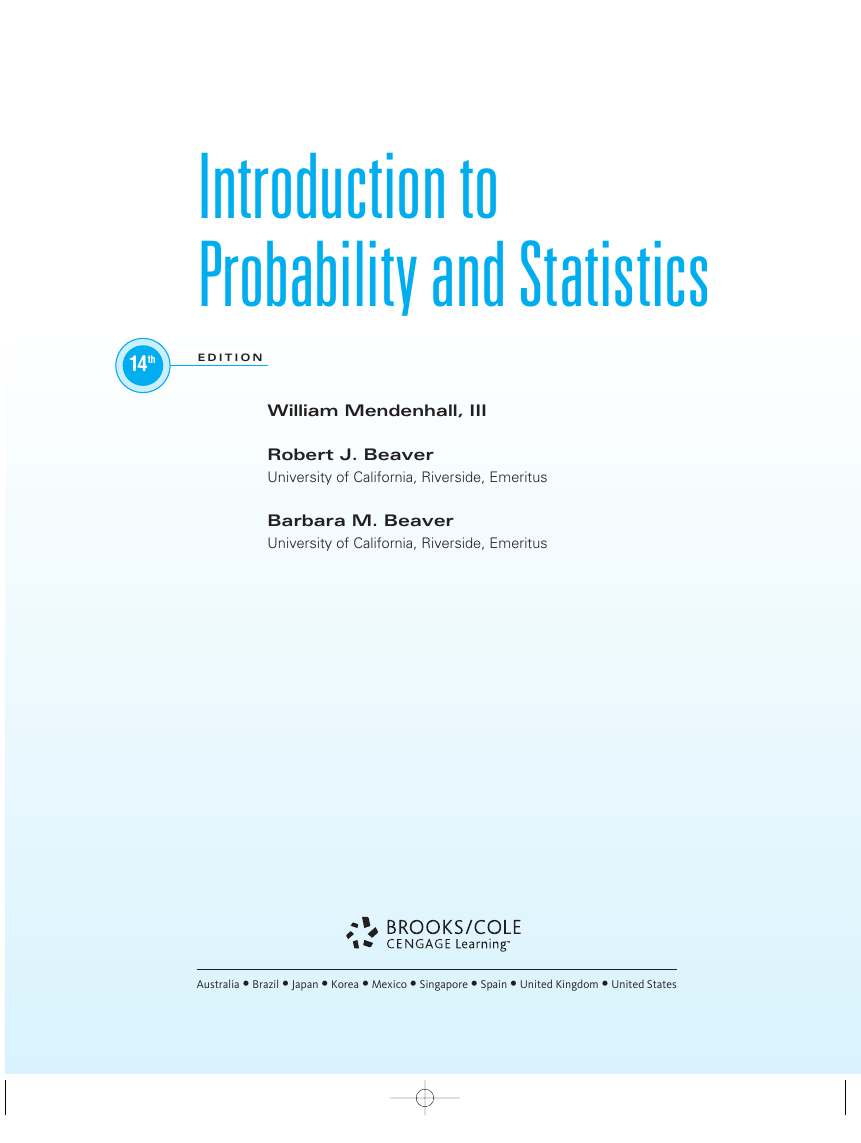
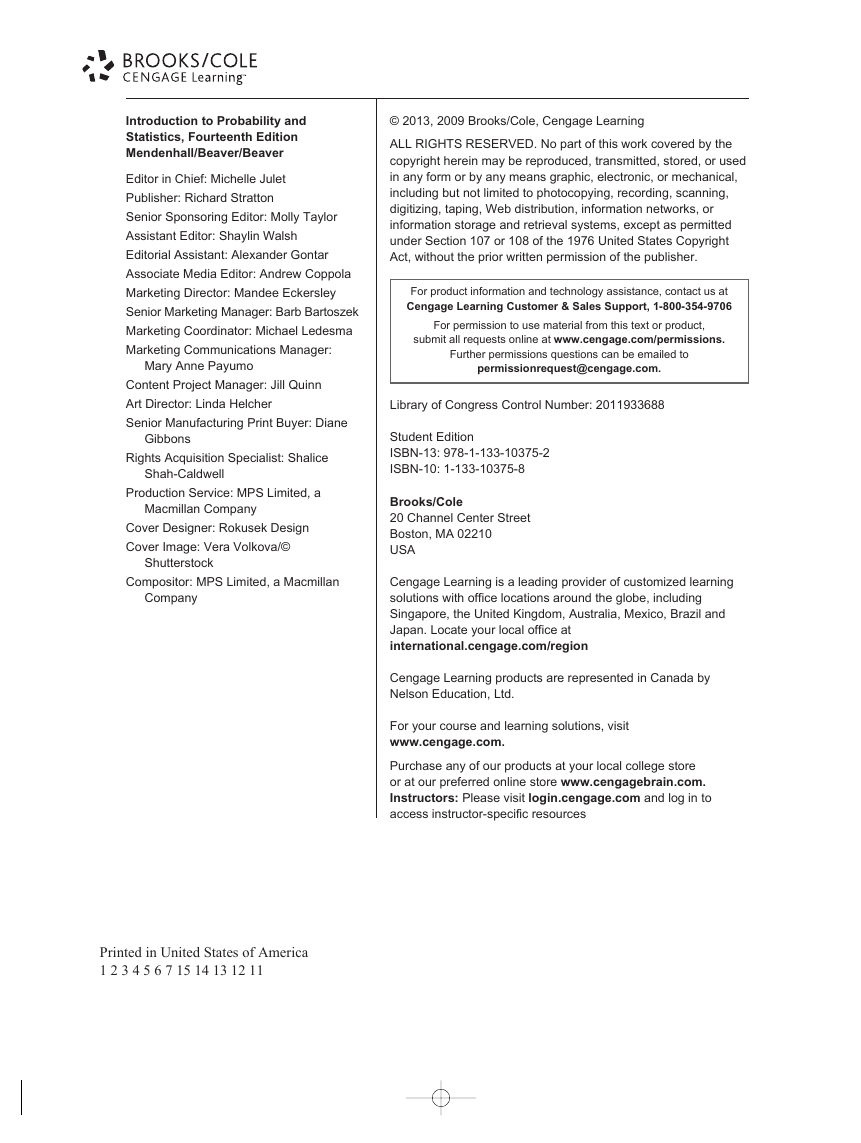

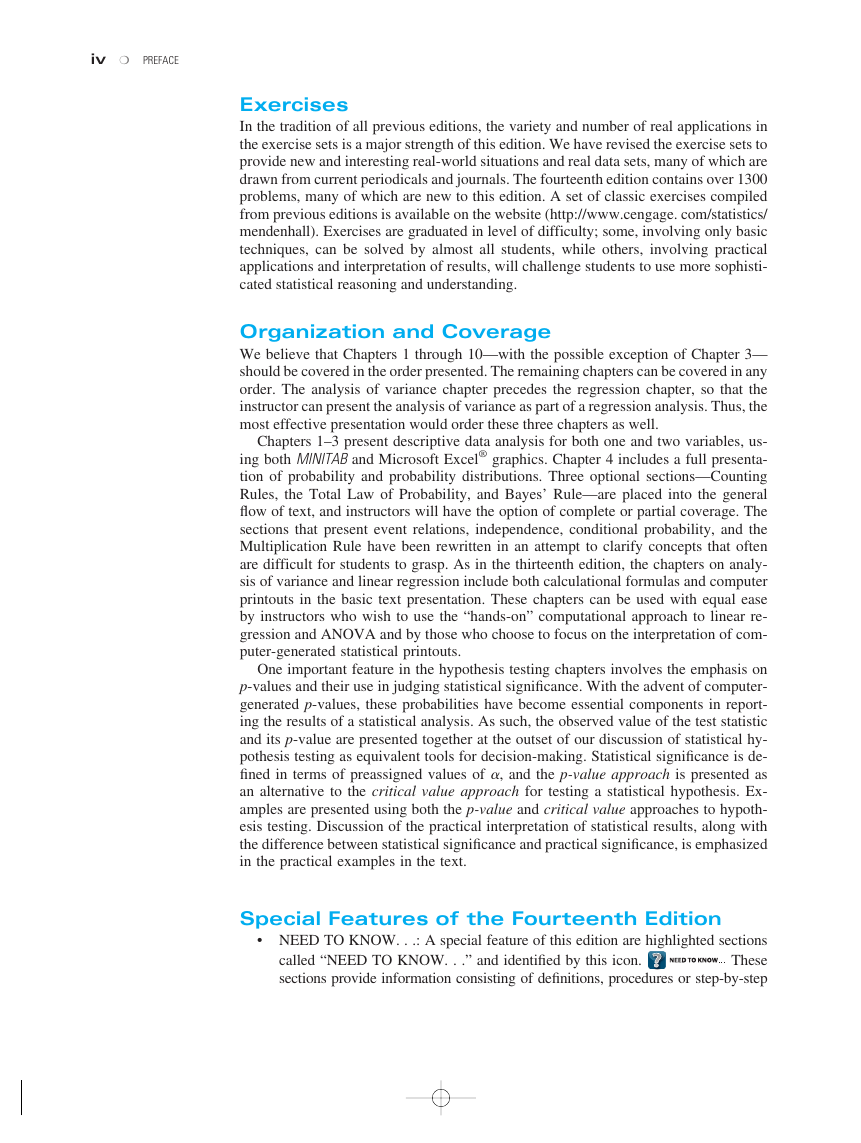
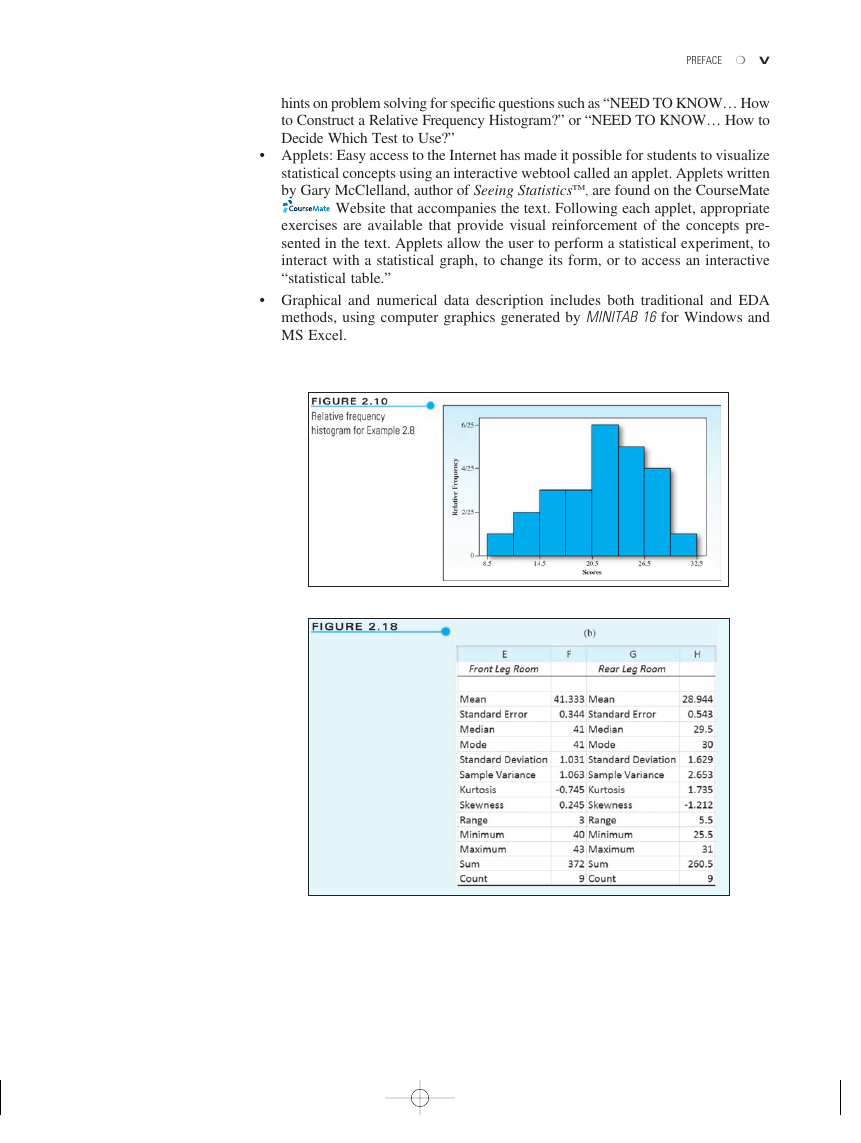
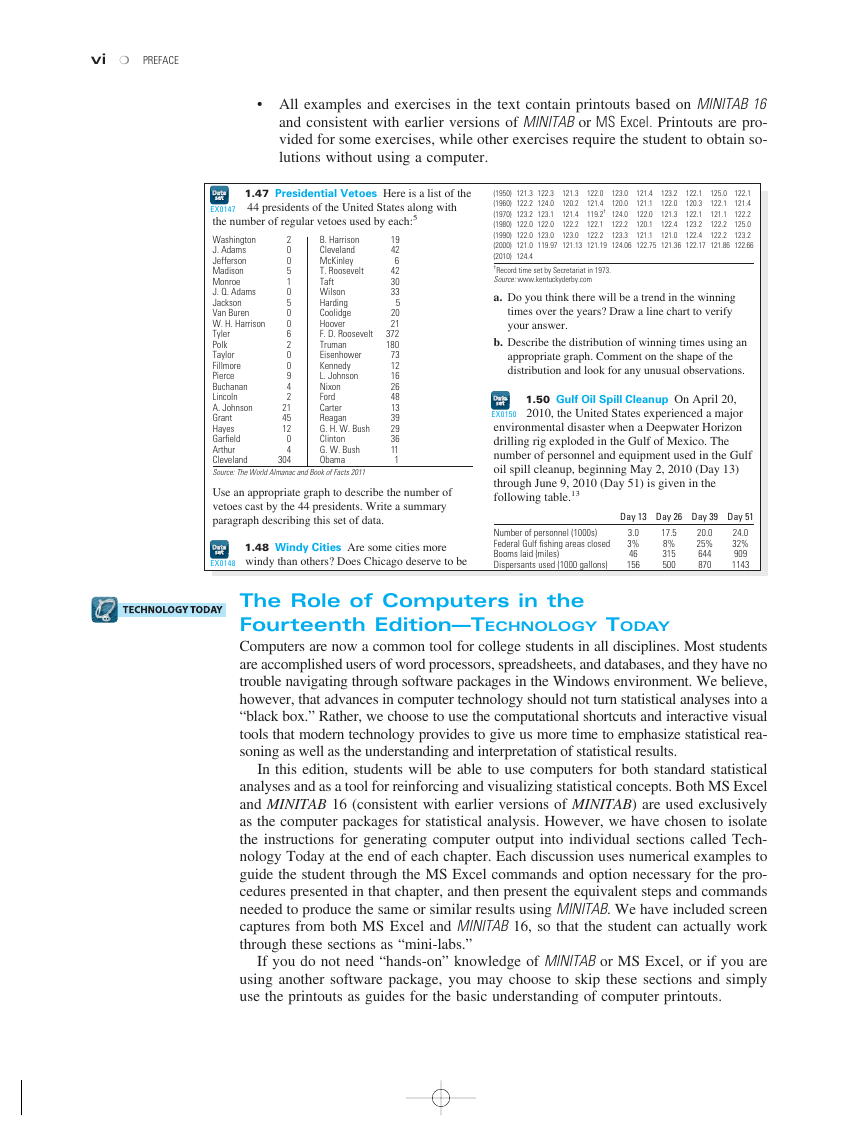








 2023年江西萍乡中考道德与法治真题及答案.doc
2023年江西萍乡中考道德与法治真题及答案.doc 2012年重庆南川中考生物真题及答案.doc
2012年重庆南川中考生物真题及答案.doc 2013年江西师范大学地理学综合及文艺理论基础考研真题.doc
2013年江西师范大学地理学综合及文艺理论基础考研真题.doc 2020年四川甘孜小升初语文真题及答案I卷.doc
2020年四川甘孜小升初语文真题及答案I卷.doc 2020年注册岩土工程师专业基础考试真题及答案.doc
2020年注册岩土工程师专业基础考试真题及答案.doc 2023-2024学年福建省厦门市九年级上学期数学月考试题及答案.doc
2023-2024学年福建省厦门市九年级上学期数学月考试题及答案.doc 2021-2022学年辽宁省沈阳市大东区九年级上学期语文期末试题及答案.doc
2021-2022学年辽宁省沈阳市大东区九年级上学期语文期末试题及答案.doc 2022-2023学年北京东城区初三第一学期物理期末试卷及答案.doc
2022-2023学年北京东城区初三第一学期物理期末试卷及答案.doc 2018上半年江西教师资格初中地理学科知识与教学能力真题及答案.doc
2018上半年江西教师资格初中地理学科知识与教学能力真题及答案.doc 2012年河北国家公务员申论考试真题及答案-省级.doc
2012年河北国家公务员申论考试真题及答案-省级.doc 2020-2021学年江苏省扬州市江都区邵樊片九年级上学期数学第一次质量检测试题及答案.doc
2020-2021学年江苏省扬州市江都区邵樊片九年级上学期数学第一次质量检测试题及答案.doc 2022下半年黑龙江教师资格证中学综合素质真题及答案.doc
2022下半年黑龙江教师资格证中学综合素质真题及答案.doc